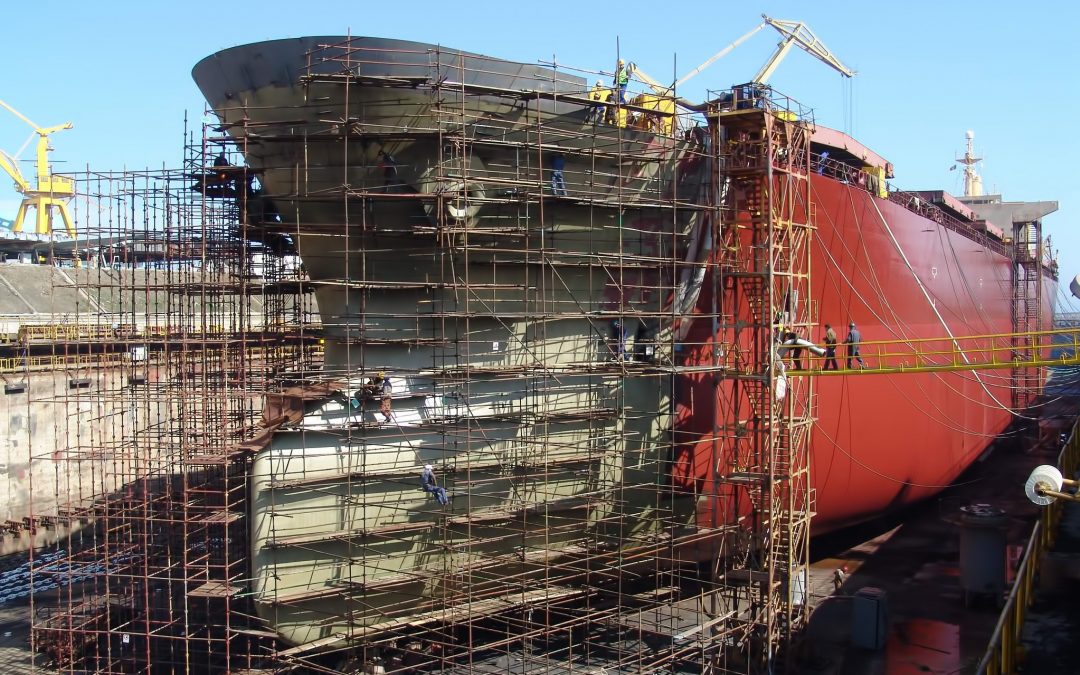HONG KONG — Two listed Chinese state-owned shipbuilders announced Monday that they are preparing for a merger. The move could end competition between them and help them better serve the military while dealing with global vessel shortages.
In separate but virtually identical filings to the Shanghai Stock Exchange on Monday night, China CSSC Holdings and China Shipbuilding Industry (CSICL) said they had signed an agreement of intent to merge earlier that day. Trading of their shares was suspended Tuesday to avoid irregular movements while they arrange the deal, with the halt expected to last no more than 10 trading days.
CSSC Holdings shares closed at 34.90 yuan on Monday, while CSICL ended the day at 4.98 yuan.
According to the disclosures, the plan would see CSICL absorbed by CSSC Holdings through a stock swap. Based on the latest share prices, CSSC Holdings’ market capitalization is 156.08 billion yuan ($22 billion) while CSICL’s is 113.55 billion yuan.
Both companies said the top goal is to “further focus on major state strategy.” That is a strong hint that the move is led and endorsed by the government.
“Promoting equipment for a strong military” was also mentioned as a priority. Both companies supply the Chinese armed forces, including the country’s homegrown aircraft carriers. Other goals include pursuing “high-quality development” of their ship assembly businesses, limiting horizontal competition and enhancing the management quality of listed entities.
The two companies ultimately belong to the same state-owned conglomerate, China State Shipbuilding Corp. (CSSC). This is one of the so-called central companies a group of fewer than 100 elite state-owned enterprises directly under the control of the cabinet-level State-owned Assets Supervision and Administration Commission, or SASAC.
The merger announcement comes as SASAC cranks up pressure on listed arms of central companies to “manage market values” by improving corporate governance, raising disclosure standards, conducting share buybacks and boosting cash dividends. If the merger succeeds in creating a more solid platform with higher efficiency and profitability, it would appear to match the policy initiatives of the government.
Still, a slew of specifics have yet to be announced, including pricing, handling of assets and liabilities, treatment of employees and coming up with a mechanism to project shareholders opposed to the merger.
Later, under a wave of state-owned enterprise reform, it was broken up into two companies in 1999, based on the location of their shipyards and facilities — to the north and south of the Yangtze River. The two entities, customarily called “North Ship” and “South Ship,” remerged in 2019 to form today’s CSSC.
But there were leftovers. CSSC Holdings and CSICL, the listed duo now in merger talks, had each belonged to the different north and south entities. Even though their parents merged, they survived as separate, publicly traded companies, and their businesses overlap.
Sinolink Securities analyst Man Zaipeng said Tuesday that expanding the “south-north ship merger” would be conducive to “upgrading management efficiency in the future and [is] a positive move,” considering that the two sides have similar businesses operating under the same umbrella.
Through the merger, the new entity could “improve the structure of the order book,” at a time when global demand for new ships is recovering from the pandemic lull and prices for vessels are rising, while steel prices are depressed due to overcapacity.
Reflecting this advantageous shift in the market, both companies reported strong interim results last week.
Source: Nikkei





